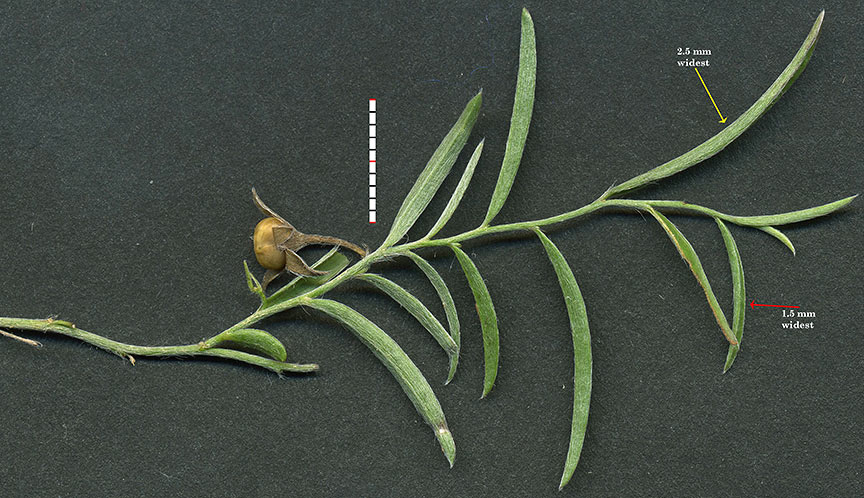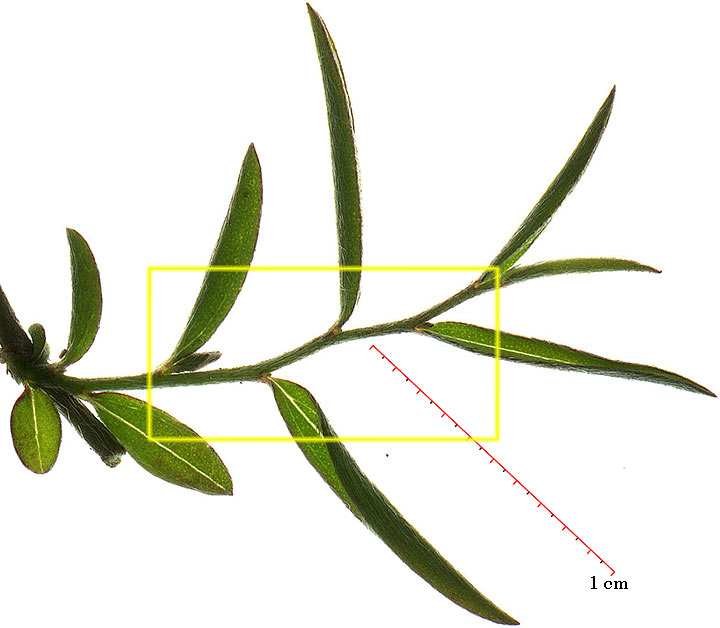
E. sericeus narrow-leaf plant, 18 November 2012 [Hays Co.]. [click to enlarge.]

Midrib impressed above, more or less prominent beneath; lateral nerves in the narrow leaves absent, in the broader ones 1 or 2 pairs from the leaf-base, long ascending.
Two E. sericeus var. cymosus plants with mature leaves much narrower than usual were collected and scanned (one shown above). (Note that if these plants were simply pressed the conduplicate leaves would fold and reveal only a midrib.)


